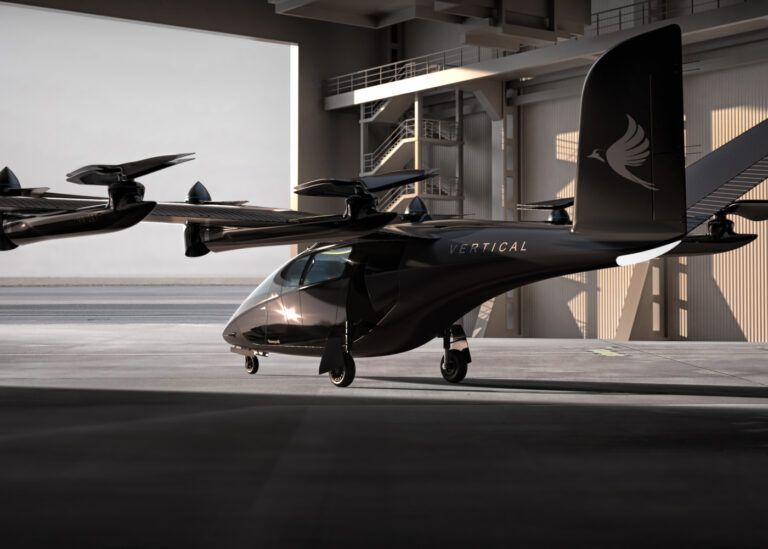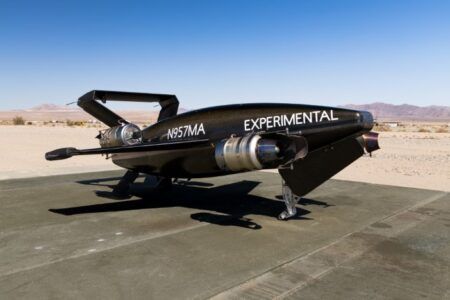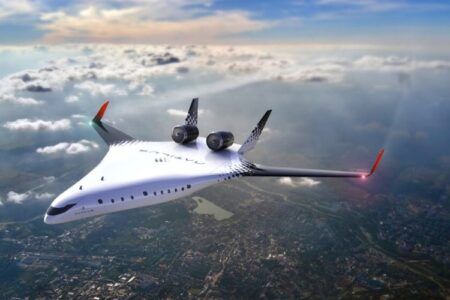Vertical Aerospace is readying its full-scale VX4 eVTOL prototype for a series of flight tests after receiving UK Government funding as part of an industrial consortium.
The Advanced Mobility Ecosystem Consortium, which includes engineering consultants Atkins, Heathrow, Bristol and London City Airports and UK air navigation service provider NATS has received a £9.5 million (US$11.3m) grant to demonstrate the viability of Advanced Air Mobility (AAM).
The VX4 is expected to fly for the first time before the end of this year.
The consortium plans to run two test flights with the VX4 in Spring 2024. The flights will be “congruent” with the VX4 receiving its type certificate as it seeks to enter service by 2025, said Vertical.
The first consortium flight will be a regional-rural connectivity use case from Bristol, the second a city-to-city route, run from Bristol to London City as a simulation. The final flight will be between a general aviation airfield north of London to Heathrow.
The VX4 eVTOL aircraft
The VX4 is a four passenger, 100 mile (160km) range piloted eVTOL aircraft that will be amongst the first of a new type of air taxi, if Vertical Aerospace achieves its goal of an entry into service during 2025.
Andrew Macmillan, director of infrastructure at Vertical Aerospace said that the eVTOL aircraft developer was in the partnership phase of the aircraft’s development.
“In terms of the technology, Rolls Royce is doing the engine, Honeywell is doing the avionics, Leonardo are doing the fuselages, GKN the wing, Solvay the carbon-fiber. We’ve also just announced battery supply from Molicel of Taiwan,” Macmillan said.
Leaning on existing aerospace leaders with proven technologies will serve a dual purpose: giving consumers confidence in the safety of the aircraft, and industry partners confidence in the scalability of its manufacture, he added.
With more than a dozen test flights conducted, Vertical’s Seraph prototype eVTOL which was first flown in October 2019 was deemed a success by the company. All subsequent testing has been pilot in-the-loop simulation and ground-based.
Speaking to ATI at the Farnborough International Airshow last week, Macmillan was confident in Vertical Aerospace’s target of flying the VX4 for the first time before the end of this year.
“We’ve got a prototype that is sitting in a shed in the Cotswolds that we’ll be flight testing this year,” he said. “This is doing bigger things, better things, more complicated things on a different scale. This time we are aiming to get a full-scale prototype of the aircraft actually flying from various places around the UK.”
With the aim of certification by 2025, Vertical have already received 1400 pre-orders, totaling over £4 billion (US$5 billion). American Airlines recently announced pre-delivery payment for 50 VX4 aircraft, with the aim of purchasing up to 350 airframes subject to certification with the European Union’s Aviation Safety Agency (EASA) and the UK’s Civil Aviation Authority (CAA).
Virgin Atlantic also ordered 150 VX4s earlier this year.
Ecosystem and regulation development
Other members of the Advanced Mobility Ecosystem Consortium include subsidiary of Brazilian aircraft-maker Embraer Eve Air Mobility, vertiport and drone infrastructure company Skyports, Bristol and London City Airport, UK Government-backed R&D organisation the Connected Places Catapult, Cranfield University and WMG at the University of Warwick.
Unlike previous phases of the Future Flight Challenge, the Advanced Mobility Ecosystem Consortium also involves an airline, Virgin Atlantic.
“With a fully electric aircraft you have to consider how we are going to charge it and the implications of charging. It flies in a different way, so we have to consider what that means for the airspace,” said Macmillan..
“The passenger process is different, you can’t just hand that over to an airline like Virgin. We have to think through the entire system.”
One of the biggest issues to entry for the AAM ecosystem will be the regulatory landscape.
James Bircumshaw, infrastructure manager for Skyports said, “We have to consider everything: landside and airside components, biometric management, resource allocation, situational electrification, fire safety. In terms of regulation the real skill and expertise is bringing that all together.”
To help achieve this goal, Skyports plans to build a “living lab” vertiport next year to test ground, passenger and air operations. Modular in design, the testbed will serve to help the consortium in “cracking the Heathrow nut,” said James Richmond, advanced air mobility lead at Atkins.
“We don’t use that terminology lightly, we intend for the lab to evolve, whether that is passenger technologies or airside operational technologies. Skyports has already been working with Virgin Atlantic to test airside ground support in terms of charging and crew operations,”
“Heathrow are a core consortium member. Having an airport of such a pedigree but also complexity on board really sets us up for bringing the model not only to the UK but globally.”





